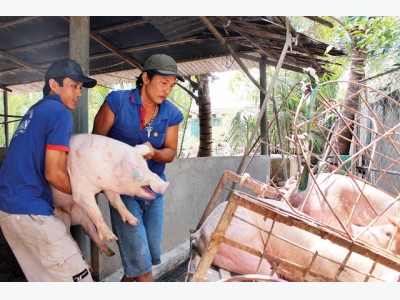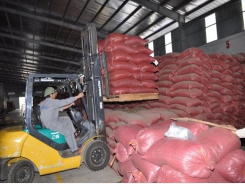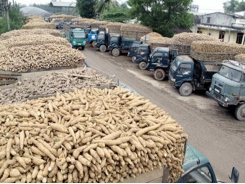Vietnamese pig farmers losing to foreign rivals on home soil

Local farmers have withdrawn from the industry while foreign players continue expanding production
Two employees carry a pig at a swine farm in Dong Nai Province, southern Vietnam. Photo: Tuoi Tre
The Vietnamese pig industry is currently a picture of contrast, with domestic farmers struggling against thriving foreign entities.
A sad Tet, or Lunar New Year, is looming for Vietnamese pig farmers as prices continue to fall, meaning local producers are often working at a loss.
Live pig prices now oscillate at around VND27,000 (US$1.2) per kg and show no signs of recovery, rubbing salt into the wounds of local pig farmers.
Nguyen Xuan Ha, who runs a herd of 2,500 swine in the Central Highlands province of Lam Dong, currently incurs more than VND300 million ($13,170) in losses on a monthly basis.
Live swine prices began to decline in October 2016, and Ha has been forced to sell at under cost for the last ten months in a row.
“This translates to a total loss of more than VND3 billion [$131,700],” he said.
He supplies 450 live pigs to the market for slaughter every month, and has had to cut every possible cost to control his losses.
“I wash the pigs every three days, instead of two days, and feed them twice a day, rather than all day as before,” he elaborated.
Ha also has to take risks by reducing the number of vaccine injections his pigs receive.
Millions of local pig farm owners across Vietnam are suffering from the same hardship, and are hoping for nothing but a price recovery.
Many have already given up and scaled down their farms.
In Dong Nai Province, which neighbors and mostly provides pork for Ho Chi Minh City, the total pig herd as of the end of last month had been 1.7 million, which represents a drop of 500,000 animals from the peak period of this year.
Nationally, total pig herd numbers slipped 6.2 percent from 2016 to 27.3 million animals, according to the Ministry of Agriculture and Rural Development.

A man washes his pigs at a farm in Dong Nai, southern Vietnam. Photo: Tuoi Tre
Foreign firms not to blame?
Contrary to the tough times being experienced by local farmers, foreign-invested companies have been able to maintain their herds, or even grow them, in recent times.
Tran Van Quang, head of the Dong Nai animal health department, said foreign firms with complete production lines and technology adaption can avoid losses on the currently low-priced pig market.
“It’s also possible that they want to take advantage of this low, while local farmers have ‘surrendered,’ and dominate the market,” he said.
Tran Dinh Thuc, director of an animal feed company in Dong Nai, echoed Quang’s view, recalling a similar situation that occurred in Vietnam’s chicken industry more than ten years ago.
At that time, when chicken prices slumped, foreign companies made up only 20-30 percent of the market.
However, foreign players took advantage of the chance to increase their scale and eventually dominate, after Vietnamese farmers either shut down their production or switched to working as an outsourcing facility for their foreign rivals.
“It cannot be ruled out that foreign companies are applying the same scenario in order to manipulate pig prices and dominate the market,” Thuc said.

A man visits his pigs at a farm in Ben Tre Province, southern Vietnam. Photo: Tuoi Tre
However, a business manager of one foreign husbandry company said foreign players are not to blame.
He said it was an unavoidable trend for the pig industry to change from small-scale, household farms to larger-scale operators.
The market has become more competitive with the participation of major foreign companies and big local corporations, he added.
The manager said foreign companies had expanded their herds during the time of low prices because “the expansion was part of their long-term business plan approved three to four years earlier.”
He added that foreign companies have accepted losses in order to expand their scale and also hope to see prices recover to make up for these losses.
Related news
Tools

Phối trộn thức ăn chăn nuôi

Pha dung dịch thủy canh

Định mức cho tôm ăn

Phối trộn phân bón NPK

Xác định tỷ lệ tôm sống

Chuyển đổi đơn vị phân bón

Xác định công suất sục khí

Chuyển đổi đơn vị tôm

Tính diện tích nhà kính

Tính thể tích ao




 Public-private partnership for transferring coffee exports from “bagging”…
Public-private partnership for transferring coffee exports from “bagging”…  Foreign importers keen on Mekong Delta fruit &…
Foreign importers keen on Mekong Delta fruit &…